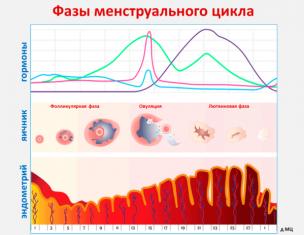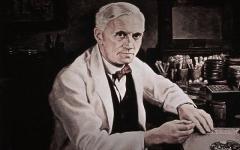37. Economic cycle. Cycle phases.
Economic cycle - Periodically advancing expansion (lifting) or reduction (recession) of the real volume of production against the background of medium economic growth. The economic cycle can be represented on the graph in the form of a wave characterizing the process of the dynamics of the production of GNP for a certain period.
The period between the peaks of the rise (recession) of the developing economy is divided into four phases: 
Phase of crisis state It begins from the moment of suspension of the rise in the development of the economy and the emergence of a decline in the production of material and spiritual values \u200b\u200bbefore suspending the recession. For this period, a higher increase in the production of goods in comparison with the growth of solvent supply of the population is characterized, which leads to a decrease in the sale of goods - the glorification of enterprises. Phase of state depression - There is a stopping of the decline in the production of goods and some increase in production compared to the crisis period. Phase of the status of revitalization It is characterized by a significant increase in the production of goods, but within the limits that do not exceed the essentially high point achieved before the crisis. Lifting state phase It assumes a jump in the production level compared to the maximum achieved in the preceding cycle. The faces separating one phase of the cycle from another, very movable, naturally. Preparation in one phase of the cycle of conditions for the transition to the next. The crisis ripes in the depths of flourish. Depression is prepared by the crisis. Revitalization increases within the framework of depression and only gradually develops into a rise. The selection of cycles of various durations with their phases and a description of the phenomena characteristic of these phases shows that people in the process of their livelihoods act an integral part of these processes and can not fully resist this powerful element of wave-like oscillations, carrying large econes losses in The period of objective patterns of lifts and downturns total-thoughd.
Features of Sovr.Ekon. Cyclov and crises: -the extension of the tendency to synchronize the cycle; - Continued reduction. cycle; - less production growth; - change in the cycle mechanism (chronic out of the crisis from the crisis has become a co-produce at the preserves. High monopoly prices); - change in a material basis; - interlacing and deepening of various crisis processes (mass unemployment and inflation);
38. Unemployment, reasons, types. Unemployment rate. Socio-economic consequences of unemployment.
Unemployment- This is such a socio-economic phenomenon in the economy, when a certain part of the working-age population, who wants to work, does not have such an opportunity and becomes forced to be dismissed.
Several types of unemployment are distinguished:
Friction unemployment It is related to the search, expectation of work. The "friction unemployment" is used in relation to workers who are looking for work or are waiting for it in the near future. With the growth of welfare, friction unemployment may increase, and its reduction is possible as the information service of the labor market, the development of communications.
Structural unemployment There is due to technological shifts in the structure of aggregate demand and the aggregate proposal, is related to structural changes in a particular industry, in the economy as a whole. It is most widely manifested in periods of introducing the results of the scientific and technological revolution into social production. Structural unemployment has a longer character than friction. People can not get a job without passing a certain period of retraining, learning.
Total friction and structural unemployment forms the so-called natural unemployment. The level of this unemployment is often called the "level of complete employment" or "equilibrium unemployment". Natural unemployment rate determines the level of potential GDP. The natural level of unemployment exists with the balance of the labor market, when the number of job seekers is equal to the number of free jobs. The natural level of unemployment is not a constant value not only for different countries and various historical periods of their development, but even for one, separately taken countries and can fluctuate under the influence of various factors. In developed countries, it is currently 5-6%.
The natural level of unemployment also depends on the system of social insurance for unemployment, the authoritative of trade unions, the tendency of people to work, differences in growth rates by sectors of the economy, tax burden, etc. Since these factors are changeable, then its level changes over time.
Long-term trends in the natural level of unemployment are largely related to the increase in the share of young people and women in the workforce, as well as with the increase and deepening of the structural restructuring of the economy.
When the deficit of demand caused by the decline in production is observed, within the framework of the economic cycle appears cyclic unemploymentwhich can be described as unemployment caused by cyclic decosions of production, crisis.
Hidden unemployment It is a really existing, but directly invisible and officially unregistered redundancy of the labor used. It arises in the conditions of incomplete use of resources caused by the economic decline or restructuring of production. Enterprises do not dismiss workers, but they translate them either on the abbreviated work day mode, or are sent to forced unpaid leave. In fact, this is the situation when the work intended for a smaller number of employees performs their more.
Unemployment level formula
Unemployment rate - this is the proportion of unemployed in total work force.
It is measured as a percentage and is calculated by the formula:
Economic consequences of unemployment
Negative
Depreciation of learning.
Reduction of production.
The cost of helping unemployed.
Loss of qualifications.
Reduced living standards.
National income states.
Reduced tax revenues.
Positive
Creating a reserve of labor for the structural restructuring of the economy.
Competition between employees as an incentive to develop abilities to work.
Employment break for retraining and raising education.
Stimulating the growth of intensity and productivity.









